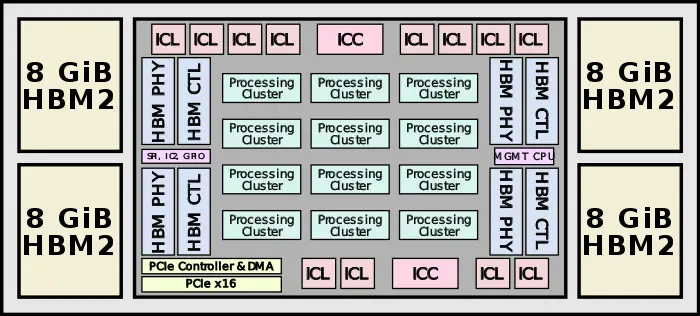From WikiChip
Difference between revisions of "nervana/microarchitectures/lake crest"
(→Block Diagram) |
|||
| Line 7: | Line 7: | ||
|introduction=November 17, 2016 | |introduction=November 17, 2016 | ||
|process=28 nm | |process=28 nm | ||
| − | |successor= | + | |successor=Spring Crest |
|successor link=nervana/microarchitectures/spring crest | |successor link=nervana/microarchitectures/spring crest | ||
}} | }} | ||
Revision as of 03:00, 6 April 2018
| Edit Values | |
| Lake Crest µarch | |
| General Info | |
| Arch Type | NPU |
| Designer | Nervana |
| Manufacturer | TSMC |
| Introduction | November 17, 2016 |
| Process | 28 nm |
| Succession | |
Lake Crest is a neural processor microarchitecture designed by Nervana.
Contents
[hide]Process Technology
Lake Crest is fabricated on TSMC's 28 nm process.
Architecture
Lake Crest was designed from the ground up for deep learning. The architecture itself is a tensor-based architecture, meaning it's optimized for blocks of compute instead of operating on scalars (as would a traditional Intel CPU would).
- Tensor-based architecture
- Nervana Engine
- Flexpoint number format
- No caches
- Software explicitly manages all on-chip memory
- HBM2 memory
- 32 GiB of in-package memory
- 8 Tbit/s bandwidth
- 12 bi-directional high-bandwidth direct chip-to-chip interconnect
This list is incomplete; you can help by expanding it.
Block Diagram
Chip
Processing Cluster
| This section is empty; you can help add the missing info by editing this page. |
Memory Hierarchy
- 32 GiB on-package HBM2
- 1 TiB/s
Facts about "Lake Crest - Microarchitectures - Intel Nervana"
| codename | Lake Crest + |
| designer | Nervana + |
| first launched | November 17, 2016 + |
| full page name | nervana/microarchitectures/lake crest + |
| instance of | microarchitecture + |
| manufacturer | TSMC + |
| name | Lake Crest + |
| process | 28 nm (0.028 μm, 2.8e-5 mm) + |
